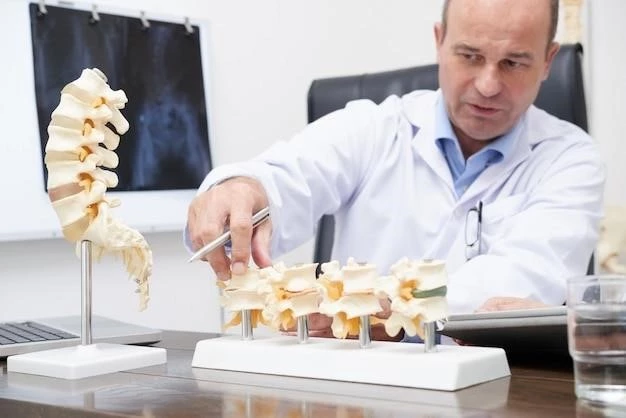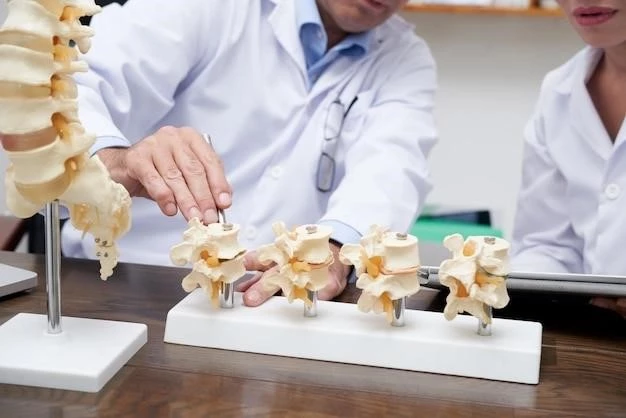Introduction to Polyostotic Fibrous Dysplasia
Fibrous dysplasia is a benign bone disorder where fibro-osseous tissue replaces normal bone structure․ It can manifest as polyostotic fibrous dysplasia, affecting multiple bones, leading to deformity, pain, and fractures․ Diagnosis involves radiology and molecular pathology to identify genetic causes and associated syndromes․ Surgical management poses technical challenges, and the effectiveness of treatment methods is still under research․
Polyostotic fibrous dysplasia is a rare bone disorder characterized by the abnormal development of fibrous tissue instead of normal bone in multiple skeletal sites․ This condition can lead to bone deformities, fractures, and pain․ It is often associated with genetic mutations and syndromes, requiring a comprehensive approach to diagnosis and treatment․ Understanding the pathological variations and clinical implications of this disorder is crucial for effective management․
Definition and Characteristics
Polyostotic fibrous dysplasia is a rare bone disorder where fibro-osseous tissue replaces normal bone in multiple skeletal sites, leading to deformities, pain, and fractures․ This condition is often associated with genetic mutations and syndromes, requiring thorough diagnostic approaches․ Understanding its unique pathological characteristics is essential for appropriate management․
Symptoms and Clinical Presentation
The clinical presentation of polyostotic fibrous dysplasia includes symptoms such as bone deformities, fractures, and chronic pain․ Patients may experience skeletal abnormalities, leading to functional impairments and cosmetic issues; Understanding these manifestations is crucial for accurate diagnosis and treatment planning to address the challenges associated with this rare bone disorder․
Radiological and Molecular Pathology
Radiological and molecular pathology play crucial roles in the diagnosis of polyostotic fibrous dysplasia․ Imaging techniques such as X-rays and CT scans help visualize bone abnormalities, while molecular analysis identifies genetic mutations underlying the condition․ Understanding the radiological and molecular aspects aids in accurate diagnosis and personalized treatment strategies for patients with this rare bone disorder․
Treatment Options for Polyostotic Fibrous Dysplasia
The treatment of polyostotic fibrous dysplasia poses challenges, with surgical management being technically demanding․ The effectiveness of managing bone deformities remains uncertain, necessitating further research to guide treatment decisions and improve outcomes․
Surgical Management Challenges
The surgical management of polyostotic fibrous dysplasia poses inherent challenges due to the technical complexities associated with addressing bone deformities in multiple skeletal sites․ Surgeons encounter difficulties in navigating the varied degree and pattern of bone involvement, emphasizing the need for individualized approaches to optimize patient outcomes․
Effectiveness of Different Treatment Methods
Assessing the efficacy of treatment methods for polyostotic fibrous dysplasia remains a challenge, as the optimal approach to managing bone deformities is yet to be established․ The varied degree and pattern of bone involvement complicate data acquisition, highlighting the need for further research to guide surgical interventions and enhance patient care outcomes․
McCune-Albright Syndrome in Relation to Polyostotic Fibrous Dysplasia
McCune-Albright syndrome is intricately linked to polyostotic fibrous dysplasia, presenting with endocrine disorders such as hyperthyroidism and Cushing syndrome․ Genetic mutations underlie this rare syndrome characterized by a variety of symptoms, including bone deformities and precocious puberty․
Endocrine Disorders Associated with McCune-Albright Syndrome
McCune-Albright syndrome, intricately linked to polyostotic fibrous dysplasia, presents various endocrine disorders such as hyperthyroidism, Cushing syndrome, and precocious puberty․ This rare syndrome involves a complex interplay of symptoms that require a multidisciplinary approach for effective management․
Genetic Causes and Syndromes
Genetic causes and syndromes associated with McCune-Albright syndrome play a significant role in the development of polyostotic fibrous dysplasia․ Understanding the complex interplay of genetic mutations and syndromes is crucial for comprehensive management and treatment of this rare bone disorder․
Surgical Management of Polyostotic Fibrous Dysplasia
The surgical management of polyostotic fibrous dysplasia of bone poses technical challenges, with the most effective methods for managing bone deformity remaining uncertain․ The varied degree and pattern of bone involvement complicate data acquisition for guiding surgical approaches, highlighting the need for further research to optimize patient care outcomes․
Technical Demands and Approaches
The surgical management of polyostotic fibrous dysplasia poses significant technical challenges due to the complexities involved in addressing bone deformities across multiple skeletal sites․ Surgeons face diverse technical demands necessitating a tailored approach to optimize outcomes for patients with this rare bone disorder;
Data-Driven Decision Making for Surgeons
Surgeons managing polyostotic fibrous dysplasia rely on data-driven decision-making to navigate the complexities of addressing bone deformities effectively․ Analyzing patient-specific data aids in tailoring surgical approaches, optimizing outcomes, and advancing the understanding of this challenging bone disorder․
Clinical Childhood Manifestations of Polyostotic Fibrous Dysplasia
Onset in childhood, polyostotic fibrous dysplasia often presents with bone pain, deformities, and fractures․ Children’s skeletal manifestations require a comprehensive approach due to the condition’s impact on growth and development․
Description of Symptoms in Nordic Cohort
In a Nordic cohort, clinical manifestations of polyostotic fibrous dysplasia in children include bone pain, fractures, and deformities․ These symptoms necessitate a tailored approach to address the impact on growth and development in pediatric patients․
Association with McCune-Albright Syndrome
McCune-Albright Syndrome is intricately associated with polyostotic fibrous dysplasia, often accompanied by precocious puberty and café-au-lait spots․ Recognizing this synergy is crucial for a comprehensive understanding of the clinical manifestations and tailored management in affected individuals․
Impact of Fibrous Dysplasia on Bone Health
Fibrous dysplasia adversely affects bone health by replacing normal bone with abnormal fibrous tissue, leading to weakened bones, deformities, fractures, and pain․ Understanding the development of abnormal fibrous tissue and the bones most commonly affected is critical in managing this bone disorder and its impact on overall skeletal health․
Development of Abnormal Fibrous Tissue
Fibrous dysplasia involves the pathological process of abnormal fibrous tissue replacing normal bone, leading to weakened bones, deformities, and fractures․ The development of this fibrous tissue significantly impacts bone health and function, necessitating tailored management strategies to address the skeletal manifestations of the condition․
Commonly Affected Bones and Symptoms
Fibrous dysplasia commonly affects bones such as the skull, femur, tibia, humerus, pelvis, and ribs․ Symptoms include bone pain, deformities, fractures, and changes in facial features․ Recognizing the commonly affected bones and associated symptoms is crucial for early detection and management of this bone disorder․
Etiology and Genetics of Fibrous Dysplasia
The development of fibrous dysplasia, particularly polyostotic form, is linked to somatic activating mutations in the GNAS gene, leading to an abnormal replacement of bone with fibrous tissue․ Understanding the genetic underpinnings and mosaicism in this rare bone disorder is crucial for effective management and personalized treatment approaches․
Somatic Activating Mutation in the GNAS Gene
Fibrous dysplasia is primarily associated with somatic activating mutations in the GNAS gene, leading to the replacement of normal bone with abnormal fibrous tissue․ This genetic anomaly plays a key role in the pathogenesis of this condition, highlighting the importance of genetic understanding in the management of polyostotic fibrous dysplasia․
Post-Zygotic Missense Mutations and Genetic Mosaicism
In the development of polyostotic fibrous dysplasia, post-zygotic missense mutations cause genetic mosaicism, leading to the replacement of normal bone with fibrous tissue․ Understanding the role of genetic mosaicism and somatic mutations in the GNAS gene is essential for comprehending the pathogenesis of this rare bone disorder․
Epidemiology and Epidemiologic Characteristics
The onset of polyostotic fibrous dysplasia occurs predominantly in childhood, affecting both genders, with a peak age of onset during adolescence․ The condition’s rarity underscores the importance of understanding its epidemiology, including incidence rates and gender predominance, for accurate diagnosis and management․
Age of Onset and Gender Predominance
Polyostotic fibrous dysplasia typically manifests in childhood, with a peak age of onset during adolescence․ While both genders can be affected, there may be gender predominance in specific presentations of the condition․ Understanding the age of onset and gender distribution is essential for accurate epidemiological characterization․
The rarity of fibrous dysplasia underscores its low incidence rates, making it a seldom-encountered bone disorder; Understanding the rarity of this condition is critical for healthcare professionals to recognize and manage polyostotic fibrous dysplasia effectively in clinical practice․
Non-Surgical Treatment Approaches
Non-surgical options for polyostotic fibrous dysplasia may include bisphosphonates to manage bone health and prevent bone loss․ These treatments aim to improve bone strength and overall skeletal health, offering non-invasive alternatives for individuals with this condition․
Incidence Rates and Rarity of Fibrous Dysplasia
The rarity of fibrous dysplasia results in low incidence rates, making it a seldom-encountered bone disorder․ Understanding the rarity of this condition is crucial for healthcare providers to effectively recognize and manage polyostotic fibrous dysplasia in clinical settings․
Preventing Bone Loss and Improving Bone Health
Implementing strategies to prevent bone loss and enhance bone health is essential in managing polyostotic fibrous dysplasia․ Measures such as bisphosphonate therapy can help prevent further bone weakening, improve bone strength, and support overall skeletal health in individuals affected by this condition․

Complications and Prognosis of Polyostotic Fibrous Dysplasia
Polyostotic fibrous dysplasia may lead to fractures, pain, bone deformities, and potential long-term implications for quality of life․ Understanding these complications is essential for determining the prognosis and guiding treatment decisions to ensure optimal outcomes for affected individuals․
Fractures, Pain, and Deformities
Complications of polyostotic fibrous dysplasia include fractures, bone pain, deformities, and potential long-term quality of life considerations․ Prognosis and treatment decisions are guided by understanding these prevalent issues in affected individuals․
Long-Term Outlook and Quality of Life Considerations
Considering the long-term outlook and quality of life aspects is crucial when managing polyostotic fibrous dysplasia․ Addressing complications like fractures, pain, and deformities, while focusing on improving the patient’s quality of life, is essential for optimizing outcomes and holistic patient care․
Evidence-based practices and expert recommendations guide research and advancements in managing polyostotic fibrous dysplasia․ Implementing guidelines for diagnosis, staging, and treatment fosters optimal patient care outcomes and ensures a comprehensive approach to this rare bone disorder․

Research and Advances in Fibrous Dysplasia Management
Evidence-based practices and expert recommendations guide research and advancements in managing polyostotic fibrous dysplasia․ Implementing guidelines for diagnosis, staging, and treatment fosters optimal patient care outcomes and ensures a comprehensive approach to this rare bone disorder․
Evidence-Based Practices and Expert Recommendations
Implementing evidence-based practices and expert recommendations is essential in advancing the management of polyostotic fibrous dysplasia․ By following established guidelines, healthcare professionals can ensure optimized patient care and outcomes, enhancing the overall management of this complex bone disorder․
Impact of Fibrous Osteodystrophy and Related Osseous Diseases
Fibrous dysplasia leads to the replacement of normal bone with abnormal fibrous tissue, affecting bone strength, shape, and overall skeletal health․ Understanding the variations in bone structure and the implications for bone health is crucial for managing fibrous osteodystrophy and related osseous diseases effectively․
Pathological Variations and Clinical Implications
The diverse pathological variations of fibrous dysplasia can have significant clinical implications, influencing bone health, function, and overall skeletal well-being․ Recognizing these variations is essential for tailored management strategies to address the diverse clinical presentations of this complex bone disorder․
Current Terminology and Diagnostic Criteria
Effective diagnosis and management of polyostotic fibrous dysplasia rely on current terminology and diagnostic criteria․ Understanding the evolving terminology and criteria is crucial for accurate diagnosis, treatment planning, and improved outcomes for individuals with this complex bone disorder․
Recent Studies and Findings on Fibrous Dysplasia
Stay up-to-date with the latest research on fibrous dysplasia, including updates on disease progression and innovative management strategies․ Discover novel approaches that enhance our understanding of the pathogenesis and improve outcomes for individuals with this complex bone disorder․
Updates on Disease Progression and Management Strategies
Staying informed about the latest research findings on fibrous dysplasia allows for advancements in understanding disease progression and refining management strategies to optimize patient outcomes․ Stay updated on the evolving landscape of treatment modalities for this complex bone disorder․
Novel Approaches to Understanding Fibrous Dysplasia Pathogenesis
Exploring innovative methodologies to comprehend the pathogenesis of fibrous dysplasia can offer insights into the underlying mechanisms of this bone disorder․ Embracing novel approaches enhances our understanding of the disease progression and opens avenues for more effective management strategies․
Patient Education and Support for Individuals with Fibrous Dysplasia
Empowering patients with knowledge on fibrous dysplasia is paramount․ Access to resources and support groups can aid individuals in navigating their condition․ Advocacy and awareness efforts enhance the understanding and management of polyostotic fibrous dysplasia, promoting overall well-being․
Information Resources and Organizations for Patients and Caregivers
Accessing reliable information resources and connecting with support organizations is crucial for patients and caregivers dealing with polyostotic fibrous dysplasia․ These resources offer valuable guidance, education, and emotional support for individuals navigating the complexities of this rare bone disorder․
Promoting Awareness and Advocacy for Rare Bone Disorders
Advocating for awareness of rare bone disorders, including polyostotic fibrous dysplasia, is vital for enhancing understanding and support for affected individuals․ By raising awareness and engaging in advocacy efforts, we can help improve resources, research, and care for those living with these complex bone conditions․
